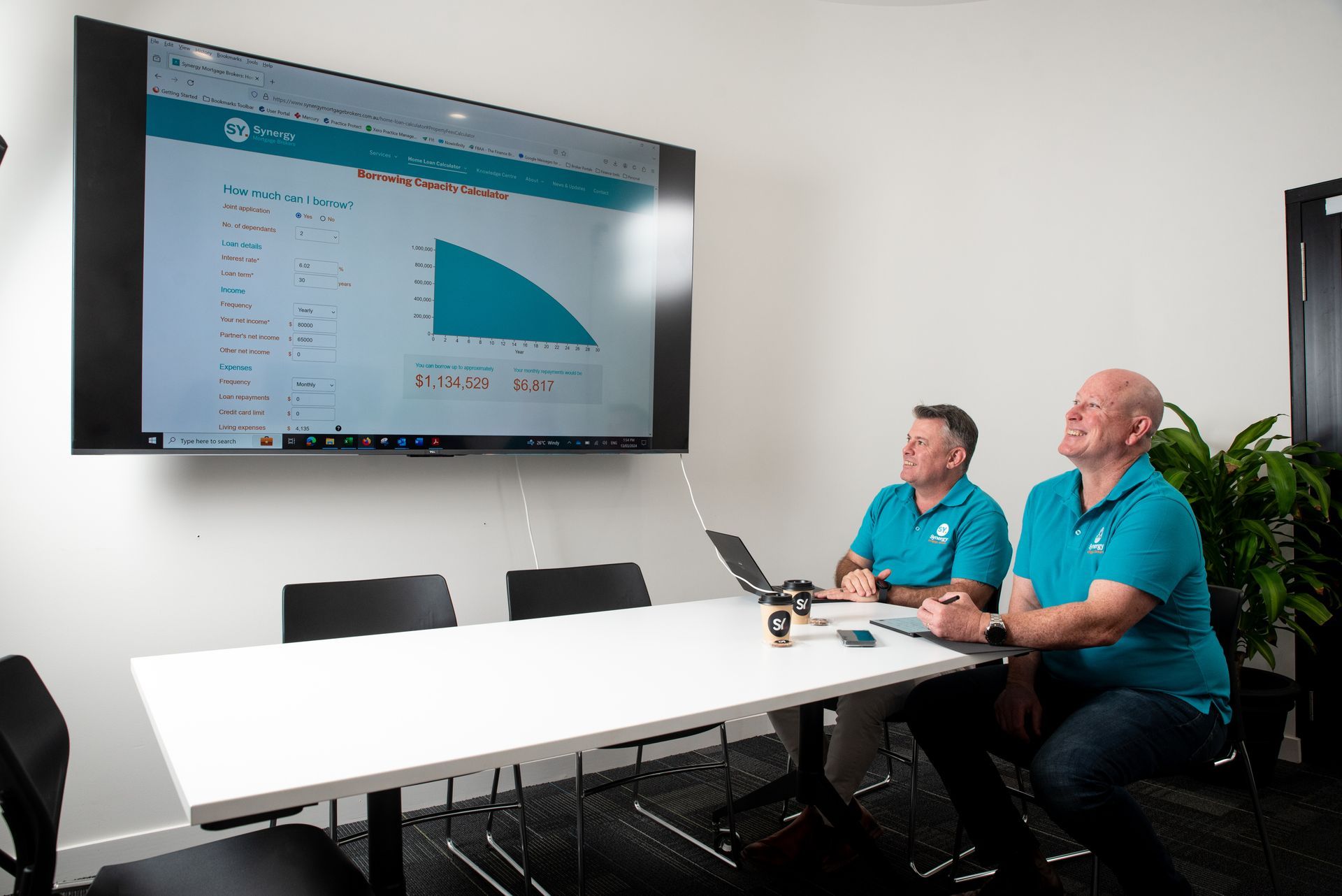LVR Explained: What Your Loan-To-Value Ratio Means For Your Home Loan
A single percentage point in your home loan's LVR could cost you thousands of extra dollars; when buying a property valued at $1,000,000, a $100,000 deposit results in a 90% LVR. This requires you to pay the most important Lender’s Mortgage Insurance (LMI).
Your property's LVR (Loan-To-Value Ratio) shows the percentage you're borrowing from the lender. Any LVR above 80% needs insurance payments. Based on your lender's terms and property price, these payments can range from a few thousand to tens of thousands of dollars.
This detailed article covers everything about LVR in home loans. You'll learn its calculation methods, its impact on your borrowing power, and smart strategies to get better interest rates.
Understanding LVR In Home Loans: What Banks Won't Tell You
Banks use the Loan-To-Value Ratio (LVR) as a key metric to evaluate home loan applications. This percentage shows how much you're borrowing against the lender's property valuation.
What Is LVR And Why It Matters
The amount a lender will offer you for property purchase depends on LVR. This ratio plays a vital part in determining your borrowing power, interest rates, and extra costs. Most lenders want an LVR of 80% or less, which means you need a 20% deposit to avoid additional charges. You will also have to cover costs such as stamp duty, conveyancer fees and title and registration fees.
How Banks Calculate Your LVR
You can find your LVR by dividing the loan amount by the property's value and multiplying it by 100. Let's look at a real example: A property valued at $764,495 needs a $152,899 deposit (plus costs) and a loan of $611,596, resulting in an 80% LVR.
Whilst the purchase price of a property bought on the open market via an arms length transaction is often a good indication of the property’s value, banks will often not rely on this alone. The bank will order a valuation to confirm the value of the property and ensure there are no abnormal risks such as flooding, high fire risk or even the uniqueness of the property which might prevent it being easily onsold.
The Relationship Between LVR And Risk Assessment
Lenders see higher LVRs as a more considerable risk. The key reason for this is a relatively small reduction in the property value might put the property and loan in a position of negative equity, meaning the owner owes more than the property is worth.
Professional valuations help banks assess risk better than market estimates, especially when they need to protect against lending more than the property's actual value. Borrowers who bring more equity to the table often get better interest rates because they present less risk to lenders.
Critical LVR Thresholds That Impact Your Borrowing
Understanding LVR thresholds helps you make better borrowing decisions. Most lenders view an 80% LVR as the significant tipping point for home loans.
The Significance Of 80% LVR
The 80% threshold draws a clear line between standard and high-risk lending. This level means you borrow 80% of the property value and provide a 20% deposit. Your LVR at or below 80% gives you two major advantages: you avoid Lender’s Mortgage Insurance and secure better loan conditions.
Understanding Different LVR Bands and How They Affect Rates
Your borrowing options depend on LVR bands. A standard loan would be considered an 80% LVR or lower. Generally, further interest rate discounts can be expected every time you drop 10%. For example, a slightly lower interest rate may be available between 60-70% and then again between 50-60%.
Above 80% LVR generally starts to be considered higher risk. Again, interest rates and LMI will increase as the LVR increases. A loan above 85% LVR may increase the interest rate, then again above 90% and finally to 95% which is usually the highest rate of LVR available and then often only for investment purchases.
Maximising Your LVR Position
Homeowners who've paid their mortgages for years often find themselves ready to improve their LVR. The LVR improves through 2 factors:
- Making loan repayments reduces the loan balance over time.
- Capital growth increases the value of the property.
A better LVR position lets you access lower interest rates and better loan terms. This is often a good trigger to look at refinancing options.
Strategies To Improve Your LVR
Your LVR drops faster when you make extra mortgage repayments, which reduces your principal balance. Your property's increased market value could lead to a lower LVR through a new appraisal, making better refinancing options available. A solid savings history shows you're financially responsible and can boost your borrowing power.
Property Valuation Tips
Your property's LVR depends on how professional valuers assess its worth. Here's what helps you get the best possible valuation:
- Your renovations should be complete before valuation.
- Keep both interior and exterior spaces well-maintained.
- Have building plans and council documentation ready.
- Make a detailed list of property features.
- The surrounding amenities can affect your valuation.
Deposit Optimisation Techniques
Government schemes help first-time buyers enter the market with smaller deposits. These programmes need an LVR between 80% and 95%, and you may have to show genuine savings over three months. Your position becomes stronger when you combine multiple government initiatives, such as the Commonwealth Government’s First Home Buyer Guarantee Scheme and the State Government’s first home buyer stamp duty concession.
Common LVR Mistakes And How To Avoid Them
LVR calculations can be tricky, and you need to pay attention to details that people often miss. Home loan terms can change a lot due to unexpected challenges that borrowers face.
Hidden Costs Affecting LVR
The loan amount isn't the only thing that affects your LVR calculations. We see establishment and administration fees that cover loan documentation and setup. Monthly administrative fees add to your borrowing costs. Some lenders will require you to cover the property valuation fee which can cost anywhere from $300 to $2,500 for a very unique property. Here are the key expenses you need to think about:
- Stamp duty and legal fees.
- Building inspection costs.
- Mortgage registration charges.
- Insurance requirements.
- Owners corporation fees for strata titled properties.
Valuation Surprises And Solutions
Different lenders can give you very different property valuations and this difference can be the difference in purchasing at an 80% LVR or 82% LVR with lenders mortgage insurance and a higher interest rates. A Melbourne teacher learned this the hard way when bank valuations differed by $76,449 to $107,029.
Banks use professional valuers who look at quick-sale value instead of market estimates. You can get a better valuation by keeping your property looking good and having all your documentation ready.
Market Timing Considerations
Many people try to time the market, but research shows this strategy usually backfires. Your LVR goes up when property values drop—this hits first-home buyers who bought at market peaks particularly hard.
Market conditions aside, refinancing becomes challenging for borrowers with high LVRs. You might have to pay LMI again if you refinance with an LVR above 80%. Some buyers choose to enter the market with smaller deposits rather than wait to save 20%. This choice needs careful evaluation of future implications.
Final Thoughts
Your LVR is a key factor in the home loan process, and navigating it can be challenging. At Synergy Mortgage Brokers, we simplify this journey by helping you understand your options and secure competitive loan terms.
Whether you’re a first-time buyer or looking to refinance, our Sunshine Coast and Toowoomba experts can help you minimise costs like Lender’s Mortgage Insurance and find the best interest rates for your situation. Contact us today to start your journey toward smarter home financing.
Subscribe Today!
Stay in the loop - subscribe to our newsletter for the latest trends and insights.
Contact Us Today
We’d love to hear from you. Choose the most convenient method and we’ll get back to you as soon as we can.








